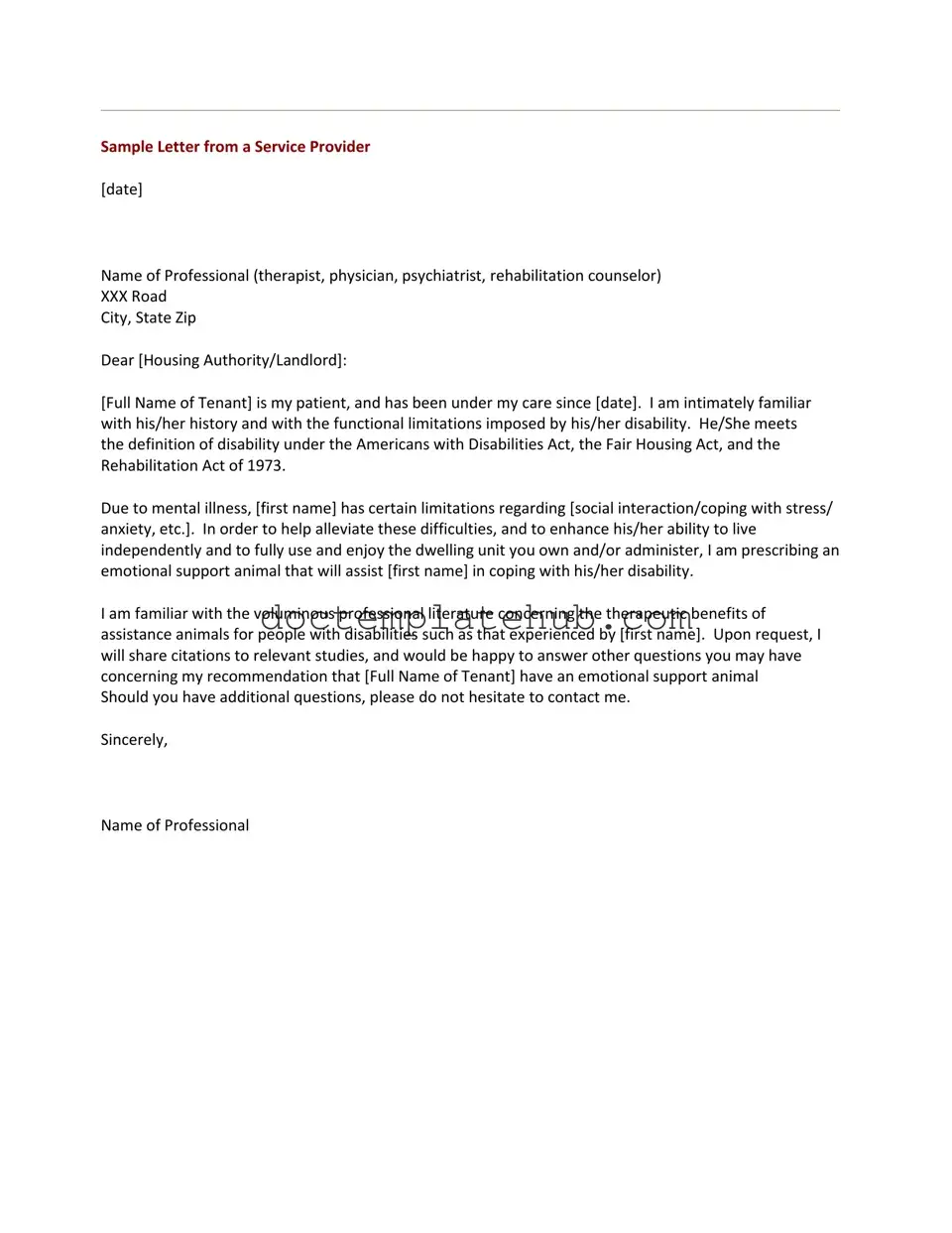What is an Emotional Support Animal (ESA) Letter?
An Emotional Support Animal Letter is a document written by a licensed mental health professional. This letter confirms that an individual has a mental health condition and that their animal provides essential support. The letter serves as proof that the animal is recognized as an emotional support animal, which can help the individual in managing their condition.
Who can write an ESA Letter?
Only licensed mental health professionals, such as psychologists, psychiatrists, or licensed clinical social workers, can issue an ESA letter. It is important that the professional is familiar with the individual’s mental health history and can attest to the necessity of the animal for emotional support.
What information should be included in an ESA Letter?
An effective ESA letter should include the mental health professional’s contact information, license number, and signature. It should clearly state that the individual has a mental health condition and that the animal provides therapeutic benefits. Additionally, the letter should be printed on the professional’s official letterhead to ensure its authenticity.
Do I need an ESA Letter for my pet to be considered an emotional support animal?
Yes, an ESA letter is required to legally recognize your pet as an emotional support animal. Without this letter, your pet does not have the same rights and protections under the law as an ESA. The letter helps to validate the need for the animal in housing and travel situations.
Can any animal be an Emotional Support Animal?
While many people think of dogs and cats as emotional support animals, the law does not limit ESAs to specific species. However, the animal must be domesticated and suitable for living in a home environment. Some individuals may choose other animals, such as rabbits or birds, as their emotional support companions.
What are the benefits of having an ESA Letter?
Having an ESA letter can provide several benefits. It allows individuals to have their emotional support animal in housing situations where pets are typically not allowed. Additionally, it can facilitate travel with the animal, as airlines may have specific policies regarding emotional support animals. The letter also serves as an official acknowledgment of the individual’s need for support.
How long is an ESA Letter valid?
The validity of an ESA letter can vary. Generally, it is recommended to renew the letter annually to ensure that it remains current and reflects any changes in the individual’s mental health status. Some landlords or airlines may have their own policies regarding the validity period, so it is important to check specific requirements.
Can I get an ESA Letter online?
Yes, there are online services that offer ESA letters. However, it is crucial to ensure that the service connects you with a licensed mental health professional. Always verify the credentials of the provider to avoid scams. A legitimate ESA letter must be personalized and issued by a qualified professional who understands your mental health needs.
What should I do if my ESA Letter is not accepted?
If your ESA letter is not accepted by a landlord or airline, first check if the letter meets all necessary requirements. If it does, you may want to discuss the situation with the provider who issued the letter. It may also be helpful to consult with a legal professional who specializes in housing or disability rights to explore your options.
